Latest News
My latest ramblings.
Enjoy! I definitely got important things to say
My latest ramblings.
Enjoy! I definitely got important things to say
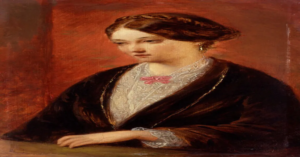
“I stand at the altar of the murdered men, and, while I live, I fight their cause.”
— Florence Nightingale, 1857
The lamplight glows gold in every textbook illustration – a saintly figure floating through Crimean hospital wards, comforting dying soldiers. But the real Florence Nightingale smelled of carbolic soap and sweat, had ink-stained fingers, and once screamed at a War Office clerk: “Your bureaucratic murder killed more men than Russian bullets!” She chain-smoked cigars during 20-hour workdays, collapsed from chronic pain at 38, and kept a rescued owl in her pocket. This is the woman who invented modern nursing – not a porcelain angel, but a flesh-and-blood revolutionary.
Florence, Italy: Born in a rented palazzo to wealthy British parents, she entered life drowning in privilege. Her nursery overlooked the Duomo, but young Florence preferred the hospital for abandoned infants downstairs. At six, she documented sick village dogs’ symptoms in a notebook: “Spot: shivers, won’t eat, licks mud.”
Victorian Cage:
The Calling: On February 7, 1837, walking in the Embley Park gardens, 16-year-old Florence heard God’s voice: “You are here to ease suffering.” When she confessed her nursing vocation, Fanny collapsed onto fainting couch: “Next you’ll want to empty chamber pots!”
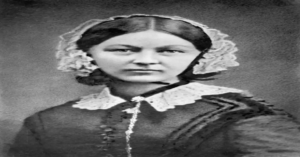
Germany, 1851: At Pastor Fliedner’s clinic, Florence finally touched real medicine:
Return to London:
Fanny staged interventions: “Marry Richard Monckton Milnes! He’s rich!”
Florence refused the poet’s proposal, writing coldly: “I have no need of a husband when corpses need washing.”
Her sister burned her nursing textbooks in the fireplace.
November 4, 1854: Florence arrived at Scutari Barracks with 38 nurses. The scene:
graph LR
A[Overflowing Sewers] --> B[Cholera]
C[4 Men/1 Bed] --> D[Gangrene]
E[Unwashed Bandages] --> F[Typhus]
G[Surgeons Drinking] --> H[Amputations Without Anesthesia]
Soldiers called her “The Brute”:
Midnight, Ward 7:
A boy shivered, clutching a miniature of his mother. Florence sat on his lice-infested pallet:
“What’s her name, soldier?”
“Mary, ma’am.”
“Tell Mary about her brave son.”
She wrote his last words as he died clutching her skirt.
Athena: Florence rescued the baby owl during Crimean nights. It perched on her lamp, hooting at rats. She fed it bacon scraps and let it nest in her cap.
The Real Lamp Ritual:
While officers dismissed her as “that hysterical female,” Florence cataloged deaths:
| Cause | Pre-Nightingale | Post-Reforms |
|---|---|---|
| Battle Wounds | 8% | 7% |
| Preventable Disease | 42% | 2% |
“Gentlemen,” she told Parliament, “your neglect is the true weapon of mass destruction.”
Collapse: Returned to England with brucellosis and PTSD. For 53 years, she directed global healthcare from a London sofa.
Revolution by Mail:
Pain Rituals:
The Betrayal: When Parthenope published “sanitized” diaries, Florence raged: “You turned my blood into lavender water!”
Her Blind Spots:
The Cost:
August 13, 1910: Died at 90. Last words: “Too late… the soldiers…”
Legacy in Action:
The Owl’s Echo:
Athena died in Scutari. Florence had her stuffed. Today, she watches from the Florence Nightingale Museum – wings spread, glass eyes reflecting every nurse who pauses before night shift.
Florence wasn’t kind. She was necessary. When you see:
That’s her rebellion. The lamp was never about gentle glow – it was a flaming torch hurled at darkness. As pandemics and wars test us, her creed endures:
“I never give nor take excuses. Save who you can. Clean what you must. And if the world calls you hysterical – scream louder.”
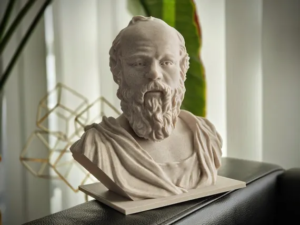
Let’s strip away the marble statues and textbook halo. Meet the real Socrates:Barefoot in Athens’ grimy streets, his eyes bulging like a crab’s, belly protruding over a threadbare cloak, breath smelling of yesterday’s onions. A man who made his wife Xanthippe scream into the courtyard about unpaid bills while he debated virtue with starry-eyed aristocrats. This is the father of Western philosophy—not a saint, but a flawed, fascinating human who dared to ask “why?”
Socrates wasn’t born in a philosopher’s robe. His cradle was a stonecutter’s workshop in Alopece, smelling of chiseled marble and sweat. His father Sophroniscus’ calloused hands shaped funeral steles, while his mother Phaenarete’s bloody fingers pulled babies from wombs. Young Socrates learned two trades:
– Carving stone until his palms blistered
– Observing his mother’s midwifery, later borrowing her metaphor: “Like she births bodies, I birth truths from minds”
By 18, he’d already questioned Athenian norms:
“Why do we sacrifice lambs to Athena? If gods need our mutton, are they truly divine?”
Elder neighbors muttered: “Sophroniscus’ boy talks like the north wind – biting and inconvenient.”
Athens, 430 BCE was no paradise:
– Plague corpses rotting in streets
– Politicians bribing crowds with theater tickets
– Slave ships unloading human cargo at Piraeus
And here came Socrates – blocking admirals in the Agora:
“You speak of naval glory, Nicias, but what IS courage? Is it charging ahead? Or knowing when retreat saves your men?”
He’d corner a playwright:
“Your tragedy made women weep. But why? What makes Hecuba’s grief ‘noble’? Define nobility for me…”
Then stand bewildered as Sophocles sputtered into his wine.
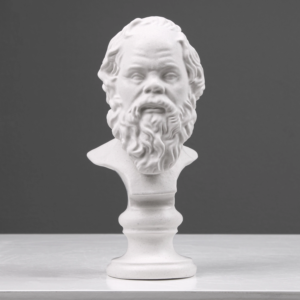
Dawn: Xanthippe shakes him awake – “Lamprocles needs bread! Will you feed minds or children today?”
He kisses her cheek: “The soul’s hunger is fiercer, wife.” She hurls his cloak into the rainwater cistern.
Morning: At the barber’s shop:
– Barber: “A trim, philosopher? You look like a thornbush.”
– Socrates: “Why cut hair? Is short hair ‘virtuous’? If virtue grows with hair, should criminals be shaved?”
(Barber threatens to shave his eyebrows)
Noon: Teaching at the Stoa:
Young Plato takes notes as Socrates dissects a politician’s speech:
“See how he swaps ‘justice’ for ‘revenge’? Words are knives, Plato. Sharpen yours.”
A student groans: “Master, must we question EVERYTHING?”
Socrates’ eyes twinkle: “Do you question your need to question questioning?”
Sunset: Home to chaos:
– Baby Sophroniscus wailing
– Xanthippe banging pots: “The landlord came! He wants rent or your philosopher’s beard!”
Socrates rocks the infant: “Hush, little skeptic. Your first question should be: Why must we pay for space to think?”
Socrates’ relentless questioning sprang from trauma:
At 38: Survived the Great Plague – watched bodies stacked like firewood, heard priests claim “Athena’s anger” while doctors died healing others.
At 41: Fought at Delium – saw Athenian hoplites trample wounded friends fleeing Spartan cavalry. Carried Alcibiades piggyback through enemy lines, whispering: “Courage isn’t the absence of fear, but the triumph over it.”
At 64: Defied the Thirty Tyrants – refused to arrest democrat Leon. Soldiers came at midnight. Xanthippe hid their sons while Socrates stared down spears: “You’ll need to kill me. Unjust orders breathe when good men inhale them.”
Spring 399 BCE. Heliaia courthouse sweltering. 501 jurors crammed on wooden benches.
Socrates enters – no sandals, hair wild, clutching a small fig (his breakfast).
Prosecutor Meletus snarls: “He teaches sons to mock fathers!”
Socrates: “Should a son honor a father who beats his mother? Define ‘honor’ – is it obedience or integrity?”
(Gasps. An old man nods fiercely)
Meletus: “He invents new gods!”
Socrates: “When I say ‘the sun is fire, not Apollo’s chariot’ – is that impiety? Jurors, look west! Does that orange ball look horsedrawn?”
(Half the jury squints. A priest drops his amulet)
The Vote: Guilty. 280 to 221.
Socrates: “You silence me because truth chafes. But ideas are shadows – you cannot shackle them.”
Final dawn. Prison cell reeks of urine and fear.
Xanthippte storms in, eyes raw:
“You selfish old fool! Was wisdom worth starving your sons?”
He wipes her cheek: “Wife, when our boys ask why I died, say: ‘For the right to ask why.’”
As the jailer mixes poison:
– Plato sobs into his expensive cloak
– Crito begs: “Flee to Thessaly! I’ve bribed the guards!”
– Socrates: “This old rag outlasts kingdoms, Crito. Truth needs no luggage.”
He takes the cup like symposium wine:
“To the undiscovered country! Now Crito… don’t forget my debt to Asclepius.”
Walks until legs fail – lies down, covering his face.
“Numbness climbs my thighs… Death’s cold kiss. How… fascinating…”
We remember Socrates because he was gloriously, maddeningly human:
– Made his wife weep with frustration
– Annoyed merchants with absurd questions
– Forgot to buy olive oil for weeks
– Yet refused to let humanity sleepwalk
His physical quirks:
– Walked pigeon-toed but stood like an oak in storms
– Had a scar from a Spartan spear on his left thigh
– Could identify 37 types of Athenian mushrooms
– Loved figs with honey after a good argument
Modern echoes:
– A student reading Plato in a jury room
– A whistleblower questioning corporate “ethics”
– Your midnight thought: “Why do I chase this?”
“You curate your life for strangers’ eyes but avoid your own gaze. You know crypto prices but not your soul’s currency. You swim in shallow seas because the depths terrify you. WAKE UP. Argue with me. Argue with your reflection. Just don’t drown in the shallows.”
2,400 years later:
– In a Brazilian favela, teens debate “What is justice?” using Socratic circles
– A Tokyo salaryman rereads the Apology before exposing corruption
– You pause before reposting: “Is this true? Good? Necessary?”
The stonecutter’s son walks with us still – not in marble halls, but in the messy human heart. His ghost nudges you:
“Εξέτασαι τη ζωή σου; Have you examined your life today?”
Sophroniscus’ tombstone workshop closed centuries ago. The Agora’s fish stalls vanished. But near Athens’ modern subway, archaeologists found a crude cup in an ancient prison cell. Its residue tested positive for hemlock alkaloids.
Beside it lay a small fig seed – fossilized, but unmistakable.
The tools of immortality: A poisoned cup. A stubborn seed. A question that won’t die.
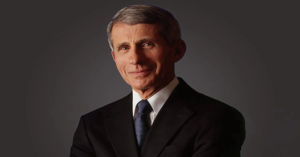
On an unremarkable graduation day at Ohio Stadium, a young Alyse Krauskopf wondered about the “unexciting” commencement speaker—Dr. Anthony Fauci. Four years later, that same man would become America’s scientific compass during its worst health crisis in a century. Born to a Brooklyn pharmacist, delivering prescriptions by bicycle, Fauci’s journey from neighborhood pharmacies to the White House briefing room embodies an extraordinary collision of scientific rigor and human-centered leadership. His story reveals how science survives—and thrives—when clothed in empathy, transparency, and relentless adaptation.
When COVID-19 emerged, the world marveled at mRNA vaccines developed in 11 months—a process that historically took decades (47 years for polio, 10 for measles). This “overnight” miracle, Fauci stressed, was built on decades of uncelebrated basic science. “It was all due to things scientists were doing in their lab 15 or 20 years ago without having an obvious pandemic in mind,” he told Cornell audiences in 2023. Yet this triumph highlighted a grim irony: even as vaccines prevented ~3.25 million U.S. deaths, pandemic preparedness funding evaporated once the immediate threat faded. “Corporate memory is fleeting,” Fauci warned—a pattern risking future catastrophes.
Fauci consistently linked human health to ecological systems. With 75% of emerging infections originating in animals, he identified wildlife trade regulation as critical prevention. While SARS-CoV-2’s origins remain debated, he noted compelling evidence pointing to Wuhan’s wet markets: “Recent data about the mix of DNA from animals with the RNA of the virus makes that more compelling”. This zoonotic lens reframed pandemics not as freak events, but predictable outcomes of human-animal-environment interactions.
Among Fauci’s sharpest COVID lessons was the decay of U.S. public health infrastructure. Contact tracing faltered early because local agencies—starved by attrition and underfunding—lacked personnel. “It wasn’t that people were inadequate; there weren’t enough of them,” he observed. His prescription: sustained investment in local response networks between crises—a “perpetual preparedness” ethos.
Fauci grasped early that “the American people” were not monolithic. Traditional media (CNN, MSNBC) reached only ~4% of citizens. So he met diverse audiences where they lived: Instagram Live with Stephen Curry, podcasts with Trevor Noah, even YouTube interviews. “We can reach diverse audiences by using social media tools,” he advised scientists—a call to abandon academic isolation for cultural engagement.
Fauci distilled scientific communication into three pillars:
His interviews followed a rhythmic cadence: What we know → What we don’t know → What we should do. This structure resisted the “and… and… and” data dump, focusing instead on actionable insights. When politics intruded, he deflected blame games with “Okay, let’s stop this nonsense,” returning always to evidence.
Fauci’s genius lay in acknowledging hardship before prescribing sacrifice. “Staying home and wearing masks are inconvenient,” he told Steph Curry, “but these actions will allow us to get back to activities we enjoy sooner”. This empathy resonated powerfully—turning him into an unlikely Gen Z meme icon and inspiring viral #MaskUp campaigns. His humanity dissolved barriers: “He spoke to us as equals,” recalled Krauskopf, despite his stature.
| Challenge | Tactic | Example |
|---|---|---|
| Vaccine hesitancy | Trusted messengers resembling audiences | Surgeon General Jerome Adams addressing “Black and Brown sisters and brothers” |
| Misinformation | Flooding the zone with truth | Refusing to “legally suppress” deniers while saturating media with facts |
| Evolving guidance | Transparent self-correction | Explaining mask guidance shifts using new data on asymptomatic spread |
Fauci’s COVID responses were honed in the AIDS pandemic. “I’m board certified in infectious disease. I’m board certified in immunology. And I’m a practicing immunosuppressive guy,” he reflected. “It was like I was created for this disease”. His early HIV work revealed parallels: stigma, scientific uncertainty, and political neglect. But COVID diverged tragically in its “incredible divisiveness,” whereas AIDS activism ultimately unified communities.
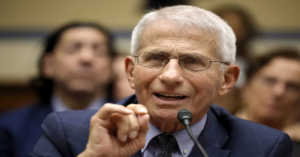
Fauci’s most radical move was embracing AIDS activists like ACT UP—once protesters chaining themselves to NIH gates. Instead of dismissing them, he listened: “Put myself in their shoes… I would do exactly what they did”. This led to transformative changes:
These innovations later spread to cancer and Alzheimer’s research, proving that “well-informed activists have a major impact on the scientific agenda”.
Fauci helped design PEPFAR under George W. Bush—an initiative delivering antiretrovirals to 13.3 million people and averting 2.2 million perinatal HIV infections. This model framed health justice as moral imperative: “We have a moral obligation to not have people die unnecessarily because of where they live”. He later championed COVID vaccine equity using identical logic, urging rich nations to fund global distribution.
Fauci identified “false equivalency”—treating baseless opinions as equal to evidence—as particularly toxic. During COVID, this manifested as “debates” pitting peer-reviewed science against conspiracy theories. “Social media communication is often with no data, nobody quality controlling it,” he lamented, distinguishing it from rigorous journalism.
Attacks accusing Fauci of “lying” about masks ignored science’s iterative nature. He unpacked the evolution:
“You’ve got to evolve with the science,” he insisted. “Science is a self-correcting process”. This intellectual honesty—admitting “if I knew then what I know now”—became his shield against disingenuous criticism.
Despite viral fame (memes, bobbleheads), Fauci rejected celebrity: “I am fundamentally a scientist.” The adulation carried venom: death threats, partisan vilification, and distortions alleging lab-leak conspiracies. “The same institute they’re attacking… developed the vaccine saving millions,” he noted with anguish. Yet he leveraged visibility for good—exemplifying Alda’s #Vaccie idea by publicly receiving boosters.
COVID exposed fault lines in scientific trust, particularly among communities of color. Fauci and actor Alan Alda stressed tailored outreach: messengers resembling audiences (e.g., Black physicians), non-condescending dialogue, and acknowledging historical abuses like Tuskegee. Jerome Adams’ video—“Black and Brown sisters and brothers”—modeled this.
The pandemic’s structural lesson was clear: local health departments needed reinforcements before emergencies. Fauci urged sustained funding to reverse attrition—a “perpetual preparedness” mantra extending beyond labs to frontline responders.
| Pandemic | Core Challenge | Fauci’s Innovation | Legacy |
|---|---|---|---|
| AIDS | Stigma, slow drug approvals | Partnering with activists; accelerated trials | Patient advocates in research; global PEPFAR program |
| COVID-19 | Misinformation; polarization | Cross-platform science communication; adapting guidance | Blueprint for rapid vaccine development; equity frameworks |
| Future Threats | Preparedness funding cycles | “Durable corporate memory” advocacy | Infrastructure investment; zoonotic surveillance |
In December 2020, as vaccines rolled out, Fauci declared to Alan Alda: “When this is over… we’ll look back and say, ‘It was science that got us out of this, pure science’”. This conviction—forged across pandemics—anchored his legacy. Yet his true achievement was humanizing that science: listening to AIDS protesters, explaining masks to frightened families, and acknowledging uncertainty without surrendering authority.
As museums now collect COVID artifacts—vial empties, ventilator prototypes—they preserve more than objects. They enshrine a principle Fauci embodied: that science, divorced from empathy, communication, and justice, cannot heal. In a divided world, his career whispers a persistent truth: Viruses need not be partisan. The enemy is complacency, not each other. And the cure—always—is shared humanity.
“You can address a perpetual challenge by being perpetually prepared. To me, that’s the overarching message.”
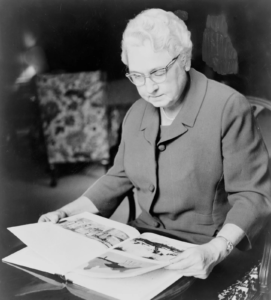
On an ordinary morning in the early 1950s, Dr. Virginia Apgar sat in the cafeteria of Columbia-Presbyterian Hospital, listening to a medical resident voice his frustration. “How can we really know which newborns need help?” he asked. In that moment, Apgar reached for the nearest piece of paper—a laminated sign reading “Please bus your own trays“—and sketched a five-point system that would become the universal language of newborn survival. This wasn’t just a clinical innovation; it was the culmination of a lifetime defying limitations to hear the faintest cries of the vulnerable.
Born in 1909 in Westfield, New Jersey, Virginia Apgar’s path to medicine was forged through early encounters with mortality. Her father’s amateur science experiments sparked her curiosity, but it was her brothers’ suffering—one lost to tuberculosis, another chronically ill—that seeded her determination to heal. At Mount Holyoke College, she balanced zoology studies with rounding up stray cats for labs and playing violin in the orchestra—a testament to her relentless energy.
Medical school at Columbia in 1929 placed her among just nine women in a class of ninety. Graduating fourth in her class in 1933, she aspired to become a surgeon. But the field’s gender barriers proved insurmountable. Her mentor, Dr. Allen Whipple, delivered sobering advice: “Even women with stellar records fail in surgery. Consider anesthesiology—it’s embryonic, and you could shape it“. It was a pivot that would redirect medical history.
Her training exposed medicine’s ingrained inequities. Arriving in Wisconsin to study under anesthesia pioneer Dr. Ralph Waters, she discovered no housing for female trainees. She slept in Waters’ office for two weeks before being moved to the maids’ quarters. Yet by 1938, she returned to Columbia as the first woman to direct the Division of Anesthesiology—a role she described in a letter to Waters: “By the second week I was ready to turn to law, to dressmaking, anything but anesthesia. After numerous mistakes I remembered you had cautioned me… but somehow you must learn by making them yourself”.
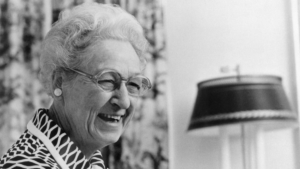
By 1949, Apgar became Columbia’s first female full professor. But her most urgent mission emerged in delivery rooms. While U.S. infant mortality declined, deaths within the first 24 hours remained stubbornly high. Nurses and doctors relied on subjective impressions (“looks pale” or “seems floppy”), leading to inconsistent care. Apgar recognized that standardized assessment could bridge the gap between life and death.
Working with colleagues, she distilled newborn viability into five measurable signs:
| Criterion | Score 0 | Score 1 | Score 2 |
|---|---|---|---|
| Appearance | Blue/pale all over | Pink body, blue extremities | Pink all over |
| Pulse (bpm) | Absent | Below 100 | Above 100 |
| Grimace | No response | Grimace/weak cry | Vigorous cry/cough |
| Activity | Limp | Some flexion | Active motion |
| Respiration | Absent | Slow/irregular | Strong cry |
| *Source: Adapted from Cureus (2024)* | |||
Apgar’s innovation masked profound personal struggles. As a woman leading an emerging specialty, she fought for resources and recognition. When Columbia established its anesthesia department in 1949, her colleague Dr. Emmanuel Papper was appointed chair—likely due to her focus on clinical work over research. Yet she channeled frustration into advocacy, training a generation of anesthesiologists while assisting in over 2,000 deliveries.
Her score also catalyzed research into obstetric anesthesia. Collaborating with Dr. Duncan Holaday and Dr. Stanley James, she discovered that cyclopropane anesthesia depressed newborns’ blood oxygen levels. Her findings led to the agent’s discontinuation in obstetrics, proving that assessment drives intervention, and intervention drives reform.
At age 50, Apgar made a radical shift. She earned a Master’s in Public Health from Johns Hopkins and joined the March of Dimes (then the National Foundation for Infantile Paralysis). As director of congenital defects research, she transformed the organization’s focus from polio to birth defects prevention.
Her approach was revolutionary:
Touring the country, she spoke with equal clarity to rural mothers and academic conferences. “Babies,” she declared, “are the best way to get people’s checkbooks out“. Under her leadership, March of Dimes funding doubled, cementing her legacy as a bridge between bench and bedside.
A 2024 review exposed a critical flaw: Skin color assessment risks racial bias. Cyanosis detection is harder in darker-skinned infants, potentially lowering scores unfairly. U.S. data confirms Black newborns are less likely to receive 10/10 scores, even accounting for clinical factors. Modern guidelines now emphasize pulse oximetry over visual checks.
The score was weaponized in malpractice lawsuits as “proof” of birth asphyxia—a distortion Apgar despised. As ACOG guidelines clarify: “The Apgar score alone cannot diagnose asphyxia“.
Amid professional pressures, Apgar’s vitality was legendary. She gardened obsessively, fished with surgeons, and built string instruments. In a famed act of rebellion, she stole a maple phone-booth shelf to craft a viola back. When the replacement wood proved too long, she sawed it in a women’s lounge while a colleague stood guard.
Her correspondence reveals self-deprecating wit. When Dr. Joseph Butterfield coined the APGAR backronym, she replied: “I chortled aloud… A secretary once told me, ‘I didn’t know Apgar was a person, I thought it was just a thing’“. Later, she dismissed attempts to link scores to IQ: “It does no harm to investigate… but I’d expect no association“.
| Year | Milestone | Impact |
|---|---|---|
| 1933 | Graduates 4th in class at Columbia | Enters medicine amid gender barriers |
| 1938 | First woman to direct anesthesia division | Challenges surgical hierarchy |
| 1949 | First female full professor at Columbia | Breaks academic glass ceiling |
| 1952 | Develops Apgar Score on a napkin | Revolutionizes neonatal assessment |
| 1959 | Joins March of Dimes | Shifts focus to birth defects prevention |
| 1973 | Publishes Is My Baby All Right? | Empowers parents with scientific knowledge |
Apgar died in 1974, but her work pulses through every delivery room. Her score, refined yet fundamentally unchanged, remains medicine’s most elegant triage tool. Google honored her with a Doodle; textbooks enshrine her; orchids bear her name. Yet her true legacy is the ethos she embodied: that science without compassion is inert, and innovation must serve the silenced.
In an era when women’s ambitions were met with institutional shrugs, she built systems that still whisper to newborns: “You are seen. You matter.” As her colleague Dr. Stanley James reflected: “Learning was the focal point of her life. Her curiosity was insatiable… She started flying lessons and wanted to fly under the George Washington Bridge“.
Virginia Apgar soared higher than any bridge—she gave humanity a mirror to reflect life’s most fragile, urgent beginnings.
“Every baby born in a modern hospital anywhere in the world is looked at first through the eyes of Virginia Apgar.”
— A tribute from a fellow physician
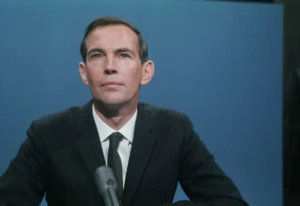
How a minister’s son from a dusty South African town gambled everything to give us more time to love.You could smell the rain coming off Table Mountain that night. December 3, 1967. Inside Cape Town’s Groote Schuur Hospital, two families wept in separate rooms. Down the hall, a surgeon rubbed his aching hands. Christiaan Barnard hadn’t slept in 36 hours. His rheumatoid arthritis flared like barbed wire in his knuckles. He’d just turned 45, but his body felt decades older. “One more year,” he’d told his brother Marius, “and I won’t be able to hold a scalpel.”
Outside, South Africa burned with apartheid. Inside, two hearts beat toward collision:
Barnard stared at the X-rays. This wasn’t just surgery. It was heresy. For 3000 years, the heart wasn’t just an organ – it was the soul’s throne. Now he planned to rip one from a dead girl and stitch it into a dying man.
What follows isn’t just history. It’s the story of how far we’ll go to cheat death for one more sunrise.
Five-year-old Christiaan pressed his ear against his brother’s tiny chest. Little Abraham hadn’t stopped crying for days. Their father – the village priest – had prayed over him. Their mother rubbed his blue-tinged skin with goose fat.
“Feel anything?” Abraham whispered.
Christiaan shook his head. No heartbeat. Just silence where life should be.
This moment tattooed itself on his soul:
At Abraham’s funeral, the small coffin vanished into red Karoo dirt. Christiaan later wrote: “That hole never closed. It became the place where my determination grew.”
Medical school was a luxury for poor Afrikaans boys. Barnard arrived with:
His secret weapon? A photographic memory. While rich students partied, Barnard dissected cadavers by candlelight after curfew. He’d return to his boarding house smelling of formaldehyde and desperation.
Then came the night that forged his hands:
“Appendix. Teenage girl. Power outage,” his professor barked. “You operate now or she dies.”
Barnard’s trembling fingers worked by hurricane lamp shadows. When the lights flickered on hours later, the girl breathed steadily. The scrub nurse vomited in relief.
He’d discovered his truth: Pressure didn’t crush him – it crystallized him.
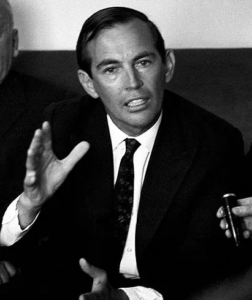
Minnesota winter stole Barnard’s breath. But nothing prepared him for Dr. Walt Lillehei’s operating room.
The “Father of Open-Heart Surgery” worked like a jazz musician:
Barnard watched, mesmerized, as Lillehei stopped a child’s heart to repair it. “We’re not fixing pumps,” Lillehei murmured. “We’re borrowing time for first kisses and graduations.”
Two revelations struck Barnard:
The diagnosis felt like a death sentence. “How many summers left?” he wrote to his wife Louwtjie. “Enough to do something that matters?”
Back home, apartheid’s shadow deepened. But Barnard noticed what Americans couldn’t:
South Africa’s brutal edge offered bizarre freedom:
When Denise Darvall was declared brain-dead, Barnard faced his Gethsemane:
He washed his hands three times, the soap stinging his swollen joints. “Let’s go see if we can fix a man,” he told his team.
What textbooks don’t show:
When they shocked the new heart, nothing happened.
30 seconds of crushing silence.
Then… a flutter. A weak contraction. Then another.
Naki rushed in despite apartheid laws: “It’s working, Chris! Look – it’s dancing!”
Down the hall, Louis Washkansky’s wife sobbed into a nurse’s uniform. Denise’s father touched the wall separating them: “Tell him her heart was strong. She climbed mountains.”
The world went mad:
Then came the darkness:
“We went from saints to butchers overnight,” Barnard confessed. “Every death felt like Abraham’s.”
While Barnard dined with royalty, his private life unraveled:
Yet in quiet moments, he pioneered again:
“Fame is a broken mirror,” Barnard wrote. “It shows you everything but the truth.”
Retirement was a phantom limb. Barnard wandered – anti-aging quackery, celebrity golf, lonely nights replaying 1967.
Then, on a Cypriot beach:
The autopsy showed something poetic: The arthritis that haunted his career had spared his heart. It was strong. It was whole.
We remember him not because he was first, but because he was humanly flawed:
His real legacy isn’t in textbooks:
As Barnard himself said: “I didn’t prolong life. I prolonged love. There’s a difference.”
In Operating Theater One, now a museum, two items gleam under glass:
Outside, a little boy presses his ear to his father’s chest – listening to the borrowed heart that lets him hear “I love you” every day.
Somewhere, a ghost with aching hands smiles.
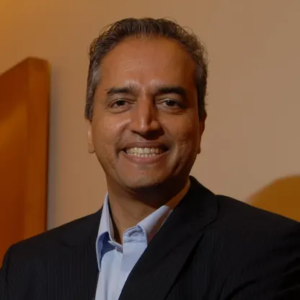
By Priya Sharma, Health Correspondent, the monsoon rain drums against the windows of Narayana Health City in Bangalore. Inside Operating Theatre 3, a 7-year-old girl named Leela sleeps under anesthesia, her chest open to reveal a heart no larger than a plum. Dr. Devi Shetty gloved hands move with rhythmic precision as he repairs a congenital defect that would have killed her before adulthood.
“When babies are born like this,” he murmurs to his team, “it’s not a tragedy. The tragedy is when we have the skill to save them but lack the system.”
Thirty minutes later, as Leela’s repaired heart takes its first independent beats, Dr. Shetty is already striding toward the next surgery. By sundown, he and his team will have performed 34 heart operations – more than some hospitals manage in a month. Each costs less than a mid-range smartphone.
| Aspect | Summary |
|---|---|
| Who | Dr. Devi Shetty, Indian heart surgeon and healthcare reformer |
| What | Performed thousands of affordable heart surgeries, revolutionized care |
| How | High-volume, low-cost model; innovative microinsurance; system efficiencies |
| Why | To make quality healthcare accessible to the poor and underserved |
| Impact | Saved countless lives, created future healers, global recognition |
Young Devi Prasad Shetty knew two things growing up in 1960s Kinnigoli:
1) He was the 8th of 9 children in a family running a modest village eatery
2) His mother believed children should fight their own battles
“Appa once broke my toy cart,” Shetty recalls with a chuckle. “When I cried to Amma, she handed me a stick. ‘Go settle it,’ she said. I got thrashed, but I learned to stand my ground.”
That resilience ignited one Tuesday morning in 1967. His 5th-grade teacher held up a newspaper: “South African Doctor Performs Miracle Heart Swap!”
“I didn’t know what ‘transplant’ meant,” Shetty confesses. “But when Sister explained Dr. Barnard gave a dying man another person’s heart? I felt lightning in my chest.”
That night, 9-year-old Devi announced at dinner: “I’ll be a heart surgeon.” His fisherman uncle nearly choked on his fish curry.

Medical school nearly broke him. “Physics and math were nightmares!” he admits. What saved him was an art teacher who noticed his trembling hands during exams.
“He made me sketch anatomy for 3 hours daily. ‘Your hands will learn what your mind fears,’ he promised. He was right.”
Years later, as a trainee at London’s Guy’s Hospital, Shetty faced his defining moment. A wealthy Indian industrialist needed emergency bypass surgery.
“The family begged me to assist. When I entered the OR, the lead surgeon snapped: ‘Nurses don’t belong here!’ I stood frozen in my brown skin.”
He persisted, eventually becoming the first Indian to lead cardiac rotations at Guy’s. But London’s gleaming hospitals haunted him. “Every night I’d dream of farmers back home selling land just to afford stents.”
1996. Kolkata. A frail 86-year-old nun grips Shetty’s wrist after her angioplasty. “Doctor,” Mother Teresa whispers, “why do you waste hands like yours on rich men?”
The question struck like a scalpel. Weeks later, he invited her to observe a surgery no Indian hospital would attempt: operating on a 9-hour-old infant with a heart defect.
As Shetty worked under the microscope, Mother Teresa watched silently. After 7 hours, the baby’s cyanotic skin flushed pink.
“You know what she told me?” Shetty’s eyes glisten recalling it. “‘God sees broken hearts He cannot fix Himself. So He sends people like you as His stitching hands.’”
That’s when Narayana Health was born.
“Western surgeons do 1-2 heart surgeries daily,” Shetty explains. “We do 35. When you operate that much, you get frighteningly good.”
Walking through Narayana’s wards, you notice radical frugality:
“We negotiate like street vendors!” laughs COO Dr. Raghuvanshi. “Dr. Shetty once made GE lower MRI costs by proving their service contract profits were obscene.”
Private rooms with marble bathrooms subsidize free beds for farmers like Gopal Singh.
“They told me my boy’s surgery would cost ₹5 lakh ($6,000),” says Singh. “Here? We paid ₹47 ($0.60) for his birth certificate.”
Beyond statistics, Narayana thrives on radical humanity:
“Who knows a patient best? Their family,” insists Shetty.
Result: 40% shorter recovery times
Shetty’s Yeshasvini scheme covers 4 million farmers for just ₹5/month($0.06) for coverage. Funded partly by state coffers, partly by Narayana’s profits.
“Before Yeshasvini, we saw 3 diabetic amputations weekly,” says nurse Lakshmi. “Now? Maybe one a month.”
When American journalist Lisa Stark visited Narayana, she expected “assembly-line medicine.” What she found shattered prejudices:
“In the pediatric ICU, I saw a surgeon singing Telugu lullabies… This wasn’t a hospital. It was a village healing itself.”
Most moving moment: 1,200 patients forming a human heart on his 60th birthday.But Shetty’s proudest moment? When 1,200 former patients formed a human heart shape outside the hospital on his 60th birthday.
At 72, Shetty still operates 4 days a week. His new goal? $800 heart surgeries using 3D-printed valves.
“We’ll get there,” he insists, showing prototypes of 3D-printed valves costing ₹1,200 ($15). “Because Luxury hospitals are cathedrals of despair. Real healthcare looks like this—”
“India taught me this truth,” he says softly.”Healing isn’t a transaction. It’s a love story written by countless ordinary hands.”
Some call him a saint. Others a genius entrepreneur.To Leela – now a 19-year-old nursing student – he’s simply “the uncle who let me hear my own heartbeat.”
And in that unassuming phrase lies the seismic truth of Devi Shetty’s revolution:
When you democratize hope, you don’t just save lives. You create future healers.